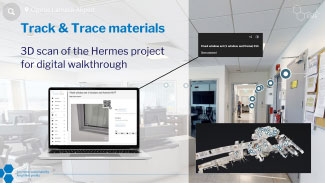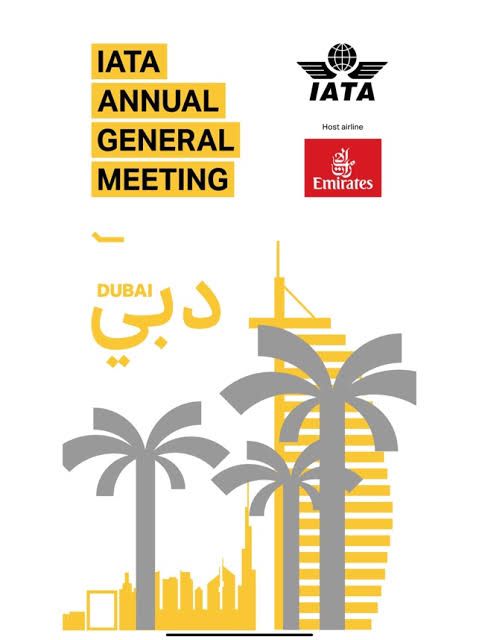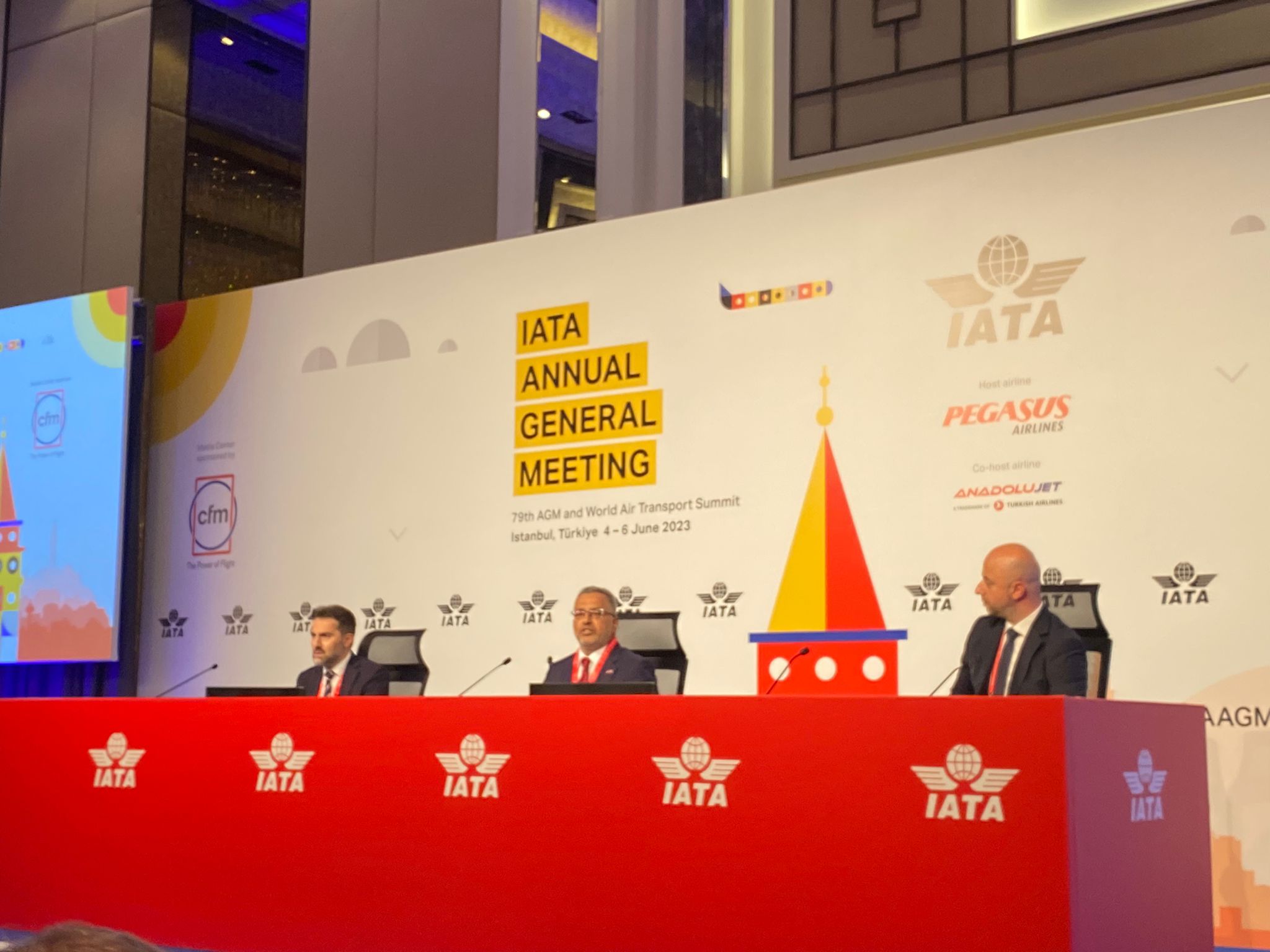




As pressure mounts from governments, society and the aviation industry to reduce environmental impact, airports are increasingly expected to act. More than just places of transit, airports are now becoming active agents in the transition towards a circular economy. For many, this transformation is no longer a choice but part of their license to operate and grow.
By shifting the perspective from “waste as a problem” to “waste as a resource”, airports can become more resilient, efficient and attractive to airlines, passengers and other stakeholders. Circular economy principles help reduce carbon emissions, minimize material consumption and build stronger collaboration across supply chains, positioning airports at the forefront of the aviation sector’s sustainable transformation.
From insight to action
But how does this work in practice?
The European project TULIPS is accelerating this transition with €25 million in EU support and 17 demonstrator projects running across several airports. Within this effort, Work Package 6 (WP6), led by Excess Materials Exchange (EME) Anne Rademaker, focuses specifically on enabling circularity in airport operations and construction. Participating airports are Schiphol Amsterdam, Avinor Oslo and Hermes Cyprus. Other partners are Technical University Delft and Elioth by Egis. Through deep analysis, stakeholder engagement, digital tools and on-the-ground experimentation, WP6 is turning strategy into action and making circular economy a reality at airports.
<potentially include visual 1 to show focus and output of WP6>
One of the first steps for participating airports was understanding how and where waste is generated. By collaborating with stakeholders (restaurants, retailers and facility managers), conducting waste safaris (on-site inspections of bins and waste areas) and assessing the eco-cost calculations of each waste stream (using lifecycle data and footprint modelling), WP6 built a detailed picture of operational waste. A full description of the methodology is available in this short article and the full paper published. This mapping revealed that four streams: residual waste, food, plastics, and paper, consistently carry the highest environmental burden.
These became the focus of targeted pilots, aiming not just to manage waste more efficiently, but to prevent it altogether. Once the priority resource streams were identified, the next step was to break them down into sub-streams—such as PET bottles in plastic bins or coffee grounds in food waste—to guide more specific interventions. A database of initiatives was created, with each entry classified by resource stream and reduction strategy, following the R-ladder framework.
Designing a Strategy
Once the baseline is established and priority waste streams are identified, airports can begin defining their circular strategy. To support this, TULIPS WP6 developed a conceptual model tailored specifically to the airport context. This model combines two well-established frameworks: the Value Hill, which maps value creation throughout the product lifecycle, and the R-Strategies (a framework that dives into the role of innovation in CE-transitions in product chains, promoting prevention, smarter reuse or recycling). To complement this model, WP6 introduced a Three Horizons framework that helps airports set clear, time-bound goals for circular transformation: the first focuses on immediate improvements in the four priority streams; the second expands action to all operational waste; and the third looks ahead to system-level change, where waste is designed out entirely.
<potentially include visual 2 based on 3 horizons to be found here>
Yet infrastructure alone isn’t enough, human behaviour is a critical factor in making circularity work. WP6 integrated behavioural science into its approach, involving students from Technical University Delt resulting in six pilot studies across Schiphol and Oslo airports. These pilots explored topics such as improving bin signage, designing food waste interventions, or optimizing internal logistics. Their findings confirmed that small changes in communication and design can significantly improve separation rates and reduce waste, highlighting the role of people in driving change.
Go to the articles here:
- Improving passenger waste separation behaviour through design at Schiphol Airport
- Developing a Circular Cup System at Schiphol Airport | TU Delft Repository
- Behavior change strategies for higher return of PET bottles/cans at Schiphol Airport | TU Delft Repository
- Designing dishwashing as a service at Oslo Airport terminal | TU Delft Repository
- Creating a sustainable and centralised internal waste logistics system for Oslo Airport | TU Delft Repository
- Packaging waste-free delivery and operations at Oslo Airport terminal | TU Delft Repository
Monitoring progress over time is essential to understand what’s working. WP6 established a performance baseline using 2019 data and a new assessment using 2024 data is now underway. This comparison, expected to be published by the end of 2025, will offer valuable insight into the effectiveness of circular strategies, informing future efforts toward the 2030 and 2050 targets.
Circular Construction: Reuse in Infrastructure Projects
While daily operations are a major source of waste, construction and renovation projects also offer significant opportunities. Airports manage enormous flows of materials during upgrades, demolitions and new builds. EME’s digital platform addresses this by giving materials a digital identity through:
• Resource Passports: Each material gets a digital identity, making it traceable and measurable.
• AI Matching: Advanced algorithms connect available materials with potential reuse opportunities.
• Track & Trace with IoT: Technologies like RFID, QR codes and Bluetooth sensors ensure transparency and accountability across the entire reuse chain.
• Marketplace & Auction Tools: Airports can browse, list, sell or exchange materials easily, reducing storage time and disposal costs.
This allows materials to be traced, stored, and reused across projects instead of discarded.
Examples are already in place. At Avinor Oslo, materials from a dismantled gate were stored and repurposed for future projects. Supported with a 3d scan, connecting EME’s product passports, the process of reuse could be evidenced! Schiphol digitized its warehouse to better manage and reuse stored items in a terminal renovation. In Cyprus, Hermes Airport used the EME platform to track materials during office remodeling. These cases illustrate how circular construction is not a distant goal, it’s already happening, saving money, reducing emissions and bringing contractors and operational teams into the process.
< see all possible images around the platform and so>
In all cases, EME is helping airports cut significant costs (to not buy new, waste less, less procurement costs), reduce carbon emissions, and involve key stakeholders, such as contractors and facility managers, in creating a culture of reuse. Later in 2025 a circular design principles guideline – validated by participating airports - will be published by EME, which is tackling circular strategies beyond reuse.
Building Momentum: Collaboration, Events and the Sector-Wide Shift
Beyond implementation, WP6 has worked actively to share knowledge and create momentum across the airport sector. Templates, tools, and public reports have been made accessible so that others can replicate or adapt the work done, which can be found here. The goal is not just to innovate but to scale what works.
In early 2025, this momentum became clearly visible through a series of high-impact events. Schiphol and TULIPS co-hosted the Circularity in Airports conference, bringing together 14 airports and industry stakeholders to discuss concrete strategies for waste reduction and material reuse. Highlights included Schiphol’s new waste dashboard, Heathrow’s efforts to improve in-terminal waste separation, and Brussels Airport’s approach to harvesting materials from demolished buildings for reuse. The session, facilitated by EME, showcased the power of collaboration in driving systemic change.
That same month, TULIPS was featured at the Passenger Terminal Expo (PTE) 2025, where the session “This is it: Circular Airports are becoming a reality” offered insights from real-world pilots. At Amsterdam Airport Schiphol, the reuse of in-terminal construction materials—enabled by EME’s digital tracking platform and collaboration with their contractor Heijmans—is already delivering results: reduced CO₂ emissions, lower storage costs, and fewer purchases of new materials. While the process requires time and commitment from operational teams, the environmental and financial benefits are clear.
The momentum continued at the ACI EUROPE RACE event in Dalaman Turkey where Hermes Larnaca took the stage with EME to showcase how their circular construction project changed the game and had a clear business case for scaling.
To build on this shared progress, TULIPS has also helped launch a dedicated working group, connecting airports across Europe to exchange experiences, co-develop solutions, and accelerate the adoption of circular economy practices throughout the sector.
These efforts reflect more than isolated progress, they signal a growing movement that is transforming circular economy from an abstract goal into a real, operational shift.
“It is great to see that our work is showing that a shift towards circular economy principles at airports has the potential to significantly reduce Scope 3 CO₂ emissions by optimizing resource use, minimising waste and enabling a more sustainable and efficient operation.”
— Christian van Maaren, Excess Materials Exchan